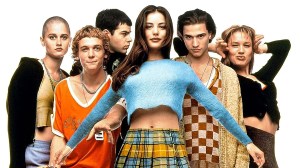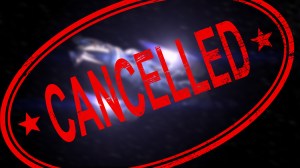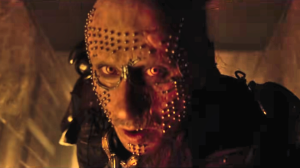Filmmaker Ben Wheatley refuses to be defined by any one film he makes. His breakout horror film Kill List put him on the radar of all genre fans, leading many to assume he would be the next unflinching voice in horror. From there, Wheatley went on to make a darkly comic road-trip romance with Sightseers, a psychedelic period piece with A Field in England, and the dystopic satire of classism with High-Rise. The filmmaker continued to subvert expectations with the action-comedy Free Fire and the gothic thriller Rebecca, with his latest film, In the Earth, managing to still surprise audiences, as it was written and directed during the coronavirus pandemic, only officially announced when the project had been completed.
Videos by ComicBook.com
In the film, “As the world searches for a cure to a disastrous virus, a scientist and park scout venture deep in the forest for a routine equipment run. Through the night, their journey becomes a terrifying voyage through the heart of darkness, the forest coming to life around them.”
With a sequel to The Meg just over the horizon, the filmmaker continues his defiance to be labeled as any one type of filmmaker, making him one of the most ambitious and exciting directors working today.
ComicBook.com caught up with Wheatley to talk about developing his latest horror film, how he selects his projects, and what audiences can expect from his upcoming The Meg sequel.

ComicBook.com: Most of the headlines when In the Earth was announced were “Ben Wheatley Secretly Makes Horror Movie,” but was it an intention to film a movie “in secret” as to avoid any sort of expectations from audiences and how the movie would be received, or was it a “secret” just because you didn’t make a big deal about it while you were making it?
Ben Wheatley: Well, it was a secret because we didn’t want to announce a movie, get halfway through it, and close down. And it’s just lame, isn’t it? And also, I just, I don’t know, press releases … I’ve been on the end of too many press releases. They go out too early, and then the lead doesn’t make any difference. No one cares your film is being shot two years beforehand. They don’t give a monkey’s about that and then it just makes up a lot of trouble for you later on. And then you’re writing this press release, and the press release is a load of nonsense as well and you go and then it causes trouble. So that’s why we did it like that. We weren’t sneaking around, we just wanted to make sure that we had a movie to show people rather than it be a disaster.
Other than maybe Host, the Zoom horror movie that stands on its own regardless of lockdown, everything else shot in quarantine leans into the idea of, “Can you believe we shot this in quarantine?” and I appreciated that your film didn’t need that disclaimer to appreciate it.
Yeah, we never thought like that. There was stuff that we were thinking of, which is if we could make it in that area in August, then no one’s got any work, so there’s a chance to make a film before the big films came back and TV came back. As it turned out, it was different because we spiked again over Christmas. We managed to make the film at the lowest infection rate. It’s even lower than now, back then in August. So that side of it worked out really well, but it was … we just didn’t know what was going to happen. And no one really knew.
Was this an idea you had prior to lockdown and you thought you could adapt it well or was it entirely conceived since the lockdown began?
No, it was all brand new. It was all as a reaction to what had happened. Almost like, you have a party where you burn all your old scripts because they’re just dumb. The lockdown changes everything, changes everybody, the way that you look at it. And having characters, dramatic characters, that you’re putting into a movie that might come out in two years time, how can you have the same mindset that we all had? I don’t remember the person I was before this thing started, you know? It’s kind of like, that person’s gone, so I think that that was partially part of it, as well. Just looking at all these movies coming out and going, “This is like watching stuff from the ’70s or the ’80s or something. It’s just got very little relevance to what’s happening now,” which is something, by the way, is in the other movies I’ve made, making something that was literally now.
You only really focus on four characters and with the speed you were making the movie, obviously you had to trust the performers, was the final film a collaborative effort? Did the cast help develop the overall story or is it pretty close to the script you had?
It was three weeks, pretty much, this shoot, and some of the inspiration for the movie had come from seeing the schedules for Halloween and going, “Oh, that’s a film shot in three weeks.” And the comparative budget is the same in terms of dollars and so, this is the bedrock of horror cinema, and these were, all those movies were shot fast and they were genre horror films, they were drive-in movies, effectively. I was reading something [that said], “Oh, it’s ultra-low budget or low budget or whatever and shot fast.” No, it’s shot in the right speed for a genre movie. This is what they should look like. It’s only a modern thing where stuff is costing 200 million and it is then two-and-a-half hours long. This is not what horror movies used to be. That was a big inspiration for it, is going, “If they could make a masterpiece in that amount of time, then we should be able to make something at least all right in the same amount of time with the same amount of resources.”
The actors, I find that it’s counter-intuitive, but the faster you work, the tighter the timeline, the better performances you can get in terms of the people that are trapped in the moment and they can’t escape. There’s no going off to the trailers and talking to their agents on their phones. It’s much more immersive for the performance, so it’s easier to get performances out of people who are just super intensive in a way. Not to say that things that are shot longer aren’t, of course not. But in terms of low-budget movies, this isn’t a problem. It’s actually, it’s a plus.
There’s definitely some folk-horror elements in this movie and, looking back, I feel like 2011’s Kill List helped kick off this new wave of folk-horror movies, and if it wasn’t for that, we might not have gotten The Witch or Apostle or Midsommar. Do you think it’s that those films have proven to resonate with audiences so it’s trendier to make them or is there something going on in the culture that is inspiring these movies?
I think it’s all those things, isn’t it? When I made Kill List, I wasn’t thinking about folk horror particularly, and it was a lot of different types of movies. I remember doing interviews for that, and everyone was going, “Wicker Man.” And I was thinking, “Oh no, I was thinking of The Parallax View.” The movie is a trap, it’s a subgenre in itself. But it was more … also, that the idea of being in Britain, I could walk out of my house now and go to a stone-age hill fort, it’s 10 feet away. The country’s covered in standing stones and this history. So the idea that the inspiration would only come from a movie from the ’70s, it is a bit weird. There was a lot of different things that were feeding into it at the time, but yeah, as it’s happened, as things have gone on over time, it is interesting that the subgenre has been identified and then explored.
And this film, in a way, is a reaction; my own reaction to my own little part in it, how within In the Earth, there are folkloric things, but they are thoroughly made up. That’s the weird thing about folk horror in general, it seems like it’s about history, but it’s not. And a lot of it is owed to the ’70s. A lot of it is owed to the Victorians as well. And it’s shifting sands of reality with this stuff, so that In the Earth deals a little bit with folk, but it also deals with science fiction and how different people come up, trying to understand something that they just cannot communicate with.
Over the course of your career, we’ve seen all these influences and all these different projects, do you actively seek out projects that are quite different from what you last worked on or is it that, after months of working on a film, you want to go in an entirely different direction?
I just like films and I’ve got a broad taste in films and I like lots of different stuff. I never went into it wanting just to do the same thing again and again and these are things that I just fancy doing. It’s like the Doctor Who thing. I pursued that, it took three or four years to get that job. It wasn’t something they just offered me up because I’d made a couple of features. It was something I was after way before we made Kill List and Sightseers and stuff.
And it’s from a love of cinema, of going, “Oh, what does this shape feel like? What does this thing feel like?” I saw an interview with New Order, and there was a question about their unique way of playing and how did they develop that. And they just went, “That’s all we can play. That’s how we play,” and I think that’s right. It’s like, everything, the thing that’s the same in all the films I’ve made, is me. So I can’t escape that.
With a sequel to The Meg coming up, what can Ben Wheatley fans expect from your take on the material and what can The Meg fan expect from the sequel?
A lot of it is respecting The Meg, and trying to make sure it’s a great Meg film. As you can see from the movies I’ve made, they’re not necessarily, it’s not … when you go and do Doctor Who, I don’t completely change it because I wanted to do it. I didn’t want to necessarily make it something completely different that nobody recognized. So there’s that element of back and forth, but it’s an opportunity to do action on such an insanely large scale, that it’s just unbelievable. From doing Free Fire, which was, I thought all my Christmases came at once in terms of action. This is just unbelievable, and just doing the storyboards for it, just thinking and going, “Oh,” it’s just … I feel a heavy responsibility for it, to make sure that it delivers to all the big shark fans out there.
*****
In the Earth lands in theaters on April 16th.
This interview has been edited for length and clarity. You can contact Patrick Cavanaugh directly on Twitter.








